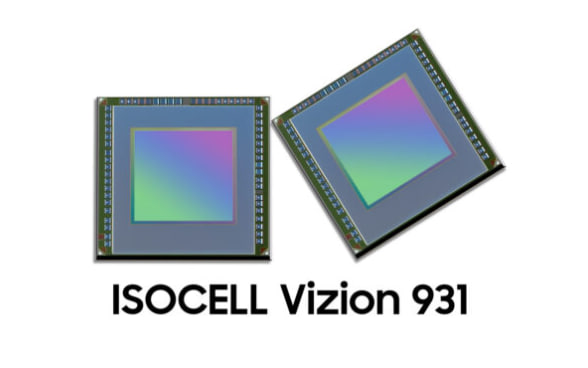Today, Samsung Electronics unveiled two new ISOCELL Vizion camera sensors including the ISOCELL Vizion 63D and the ISOCELL Vizion 931. Both these sensors are expected to be used in future Samsung products such as its upcoming mixed-reality headset.
As per the details, the ISOCELL Vizion 63D is a ToF (Time of Flight) sensor, while the ISOCELL Vizion 931 is a global shutter sensor designed to offer better visual capabilities. However, the sensors are currently being tested by device makers and brands worldwide.
ISOCELL Vizion 63D – A time-of-flight sensor, that captures high-resolution 3D images with exceptional detail.
Samsung ISOCELL Vizion 63D is an indirect ToF (iToF) camera sensor that measures the phase shift between emitted and reflected light to sense its surroundings in three dimensions. With exceptional accuracy and clarity. It is ideal for service and industrial robots as well as XR devices.
To be mentioned, the Vizion 63D is the industry’s first iToF sensor with an integrated depth-sensing hardware image signal processor (ISP). It can capture 3D depth information without the help of another chip, enabling up to a 40% reduction in system power consumption.
The sensor can also process images at up to 60 frames per second in QVGA resolution (320×240) and achieves high Video Graphics Array (VGA) resolution (640×480) within a 1/6.4” optical format, making it an ideal fit for compact, on-the-go devices.
ISOCELL Vizion 931 – A global shutter sensor captures dynamic moments with clarity and precision.
On the other hand, the ISOCELL Vizion 931 is a global shutter image sensor tailored for capturing rapid movements without the jello effect. This offers the ability to capture sharp, undistorted images of moving objects, making it well-suited for motion-tracking in XR devices, gaming systems, service and logistics robots as well as drones.
The Vizion 931 also achieves the industry’s highest level of quantum efficiency, delivering an impressive 60% at 850nm infrared light wavelength. It further supports multi-drop that can seamlessly connect up to four cameras to the application processor using a single wire.




Leave a Reply